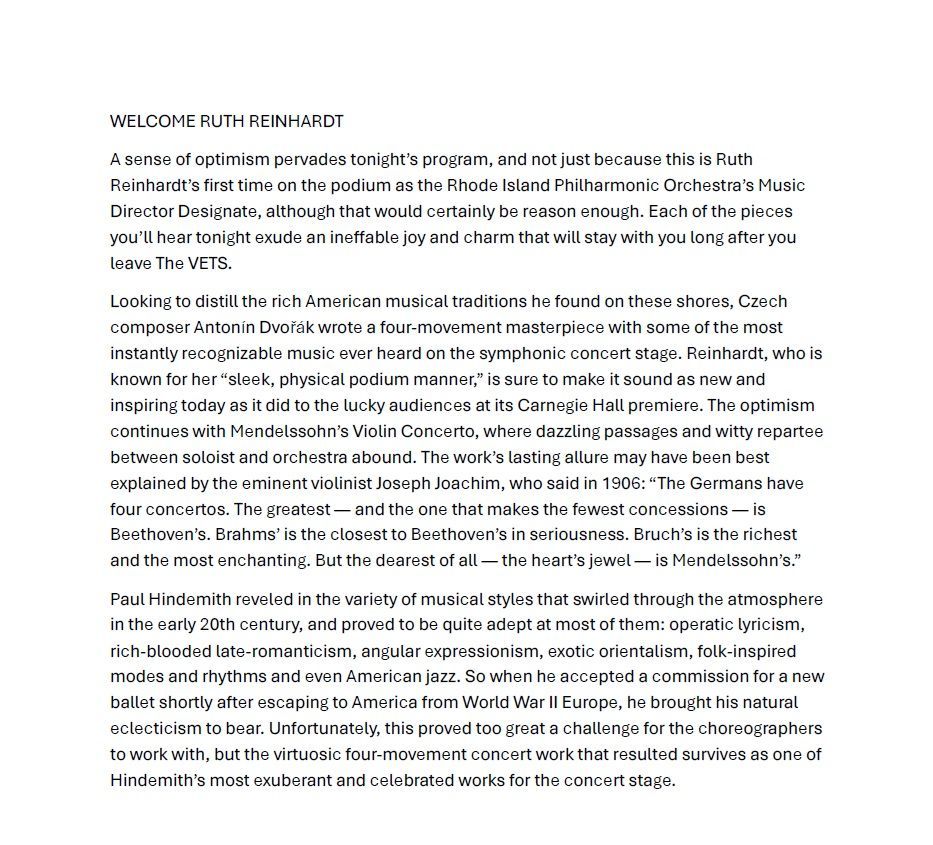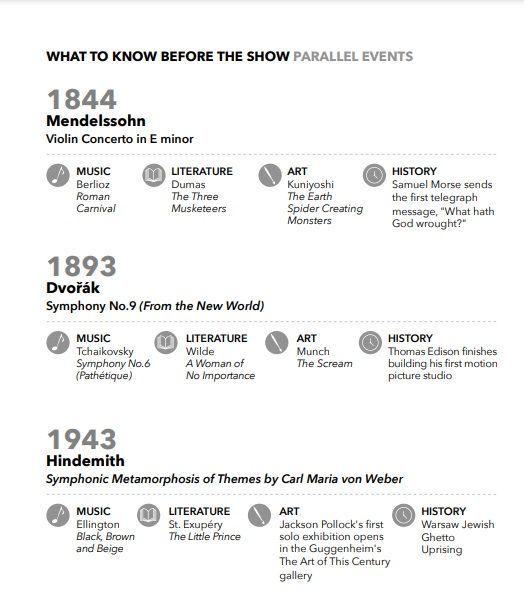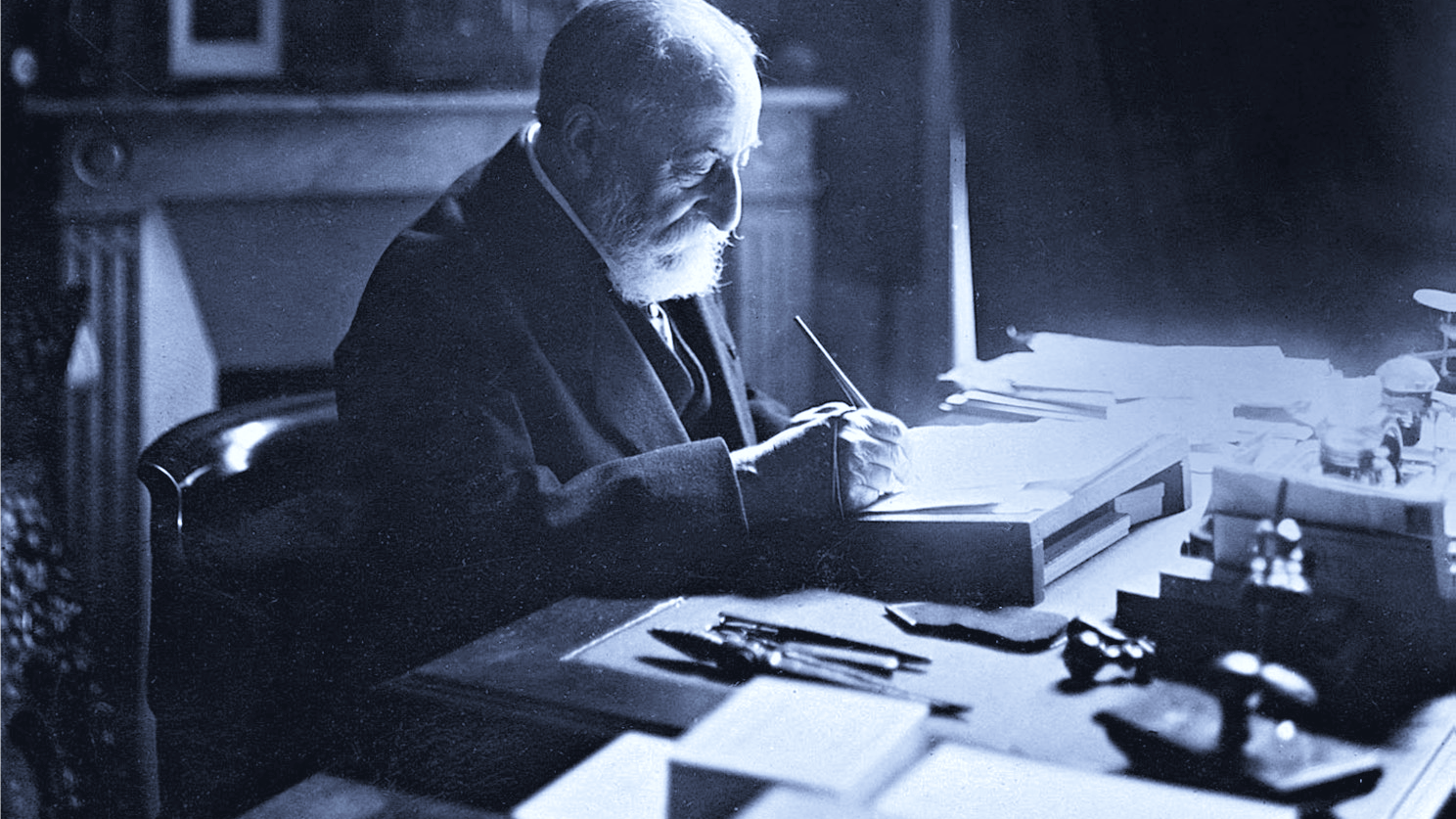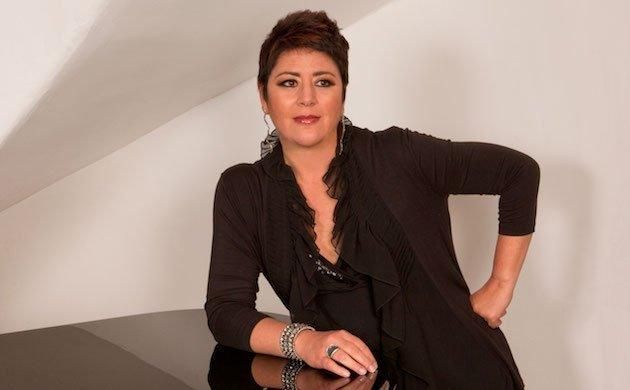THE STORY BEHIND: Hindemith's "Symphonic Metamorphosis of Themes by Carl Maria von Weber"
Share
On November 9, RI Philharmonic Music Director Designate Ruth Reinhardt and the Rhode Island Philharmonic Orchestra will present WELCOME RUTH REINHARDT with violinist Blake Pouliot.



Title: Symphonic Metamorphosis of Themes by Carl Maria von Weber
Composer: Paul Hindemith (1895-1963)
Last time performed by the Rhode Island Philharmonic:
Last performed October 20, 2018 with Bramwell Tovey conducting. This piece is scored for piccolo, two flutes, two oboes, English horn, two clarinets, bass clarinet, two bassoons, contrabassoon, four horns, two trumpets, three trombones, tuba, timpani, percussion and strings.
The Story: Ruth Reinhardt, whose artistic approach always leads her to search for the most expressive of colors in a work, will have no problem finding them in the sparkling finale to tonight’s program. Hindemith’s enduring
Symphonic Metamorphosis of Themes by Carl Maria von Weber was originally sketched as a ballet, and its four distinctive movements maintain a certain sense of choreography. But by the 1940s, he had developed an idiosyncratic style that lent itself more to adventurous listening than to traditional ballet.
After fleeing Nazi Germany in 1937, Hindemith accepted a position at Yale, where he remained on the composition faculty through 1953. Shortly after his arrival, he was approached by the choreographer Leonid Massine, for whom he had previously composed the ballet
Nobilissima
visione. Massine wanted him to write a new ballet set to arrangements of music written by the early 19th-century romantic composer Carl Maria von Weber. Hindemith quickly took to the project, but apparently went too far, in Massine’s opinion, with Weber’s original material.
“It seems the music is too complicated for them,” said Hindemith, referring to the dancers in Massine’s company, “and that they simply wanted an exact orchestral arrangement of the original Weber. I am not just an orchestrator.” But there was something in the attempt of value to Hindemith. Three years later he returned to the project, and literally “metamorphosized” Weber’s originals into a single work, exploding with color and inventiveness, that cemented his place among the top composers of the 20th-century.
The first, third, and fourth movements of this “symphonic metamorphosis” are based on melodies from relatively obscure piano duets of Weber that Hindemith and his wife Johanna would often play together. The second movement is derived from Weber’s overture
Turandot
(a play with incidental music, not to be confused with Puccini’s opera of the same name). After receiving its world premiere by the New York Philharmonic in 1944, with Artur Rodzinski conducting, Hindemith immediately felt that it should also be available for band and requested that his Yale colleague Keith Wilson create the transcription. Since that time, the heroic march that serves as the suite’s fourth movement is often performed on its own.
Program Notes by Jamie Allen © 2024 ALL RIGHTS RESERVED
Tickets start at $20! Click HERE or call 401-248-7000 to purchase today!







